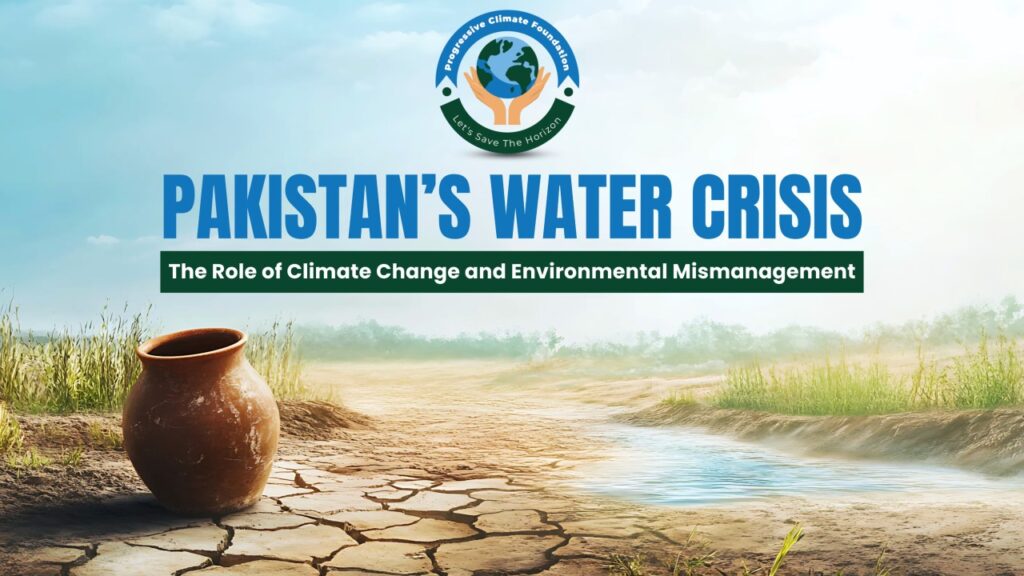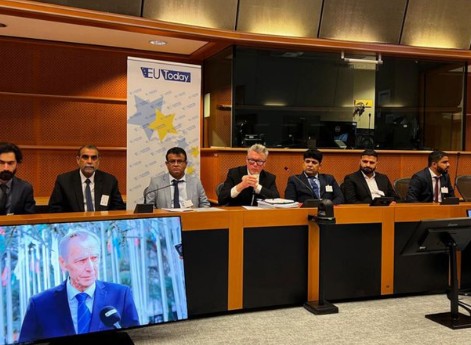
At the heart of South Asia, Pakistan is teetering on the brink of a catastrophic water crisis, one that is not born of scarcity, but of systemic mismanagement, governmental apathy, and political deflection. Despite being one of the more water-abundant nations globally, with the World Bank ranking only 35 countries ahead of it in natural water availability, Pakistan finds itself among the most water-stressed nations in the world. The situation reveals a profound and unsettling truth: Pakistan’s water crisis is the consequence of human mismanagement rather than an inevitable natural catastrophe.
Pakistan receives nearly 80% of its annual rainfall from the monsoon season, yet it possesses less than 10% of the infrastructure needed to store this water. The country’s agricultural sector consumes 90% of its water, and nearly half of that is lost due to inefficient irrigation systems. This hemorrhaging of resources is emblematic of a broader failure in water governance. Experts estimate that 7 million acre-feet of water flow into the sea every year due to the government’s inability to strategize and build adequate infrastructure.
The consequences of this mismanagement are dire. Over 70% of Pakistan’s population lacks access to safe drinking water, and 80% are deprived of both clean water and sanitation. The country’s per capita water availability has plummeted to 950 cubic meters, well below the Falkenmark Water Stress Indicator threshold of 1,000 cubic meters. With only a 30-day water reserve for its entire population, Pakistan is hurtling toward a famine-like situation.
Pakistan’s water infrastructure is outdated and insufficient. Its dams, critical for water storage and distribution, can only hold reserves for 30 days, compared to India’s 220-day capacity. The Khanpur, Rawal, and Simly dams, which supply Islamabad and Rawalpindi, are frequently unable to meet demand. Even the country’s largest reservoirs, Tarbela and Mangla, have reached dead storage levels, rendering them useless for hydropower and irrigation.
Groundwater systems are equally compromised. In Islamabad, groundwater depth has dropped from 22.8 to 56 meters; in Rawalpindi, from 37.8 to 59 meters. Lahore sees a decline of one meter per year. The lack of regulation has led to rampant overuse and contamination. Illegal wells flourish, and toxic substances, trash, and sewage are dumped into watersheds, resulting in waterborne diseases and rising cancer rates.
In April 2025, Pakistan witnessed a dramatic disruption that underscored the volatility surrounding its water governance. For ten consecutive days, freight movement from Karachi was brought to a halt, severing supply routes to the northern population centers. The paralysis stemmed from the federal government’s announcement of a controversial initiative: the construction of six canals intended to irrigate the Cholistan Desert in the eastern region of the country.
The proposal ignited fierce opposition in Sindh province, where communities feared the diversion of water would further deplete their already strained supplies. Sindh resents any new water mega projects in the powerful Punjab province. Along with the central government, Punjab wants to push forward dams and infrastructure projects in the name of development. In response, protesters blockaded key highways, effectively freezing the nation’s logistical arteries. The unrest forced a swift political retreat. By early May, Prime Minister Shehbaz Sharif publicly suspended the canal project, revealing the fragility of national consensus on water allocation and the deep mistrust between provinces over resource distribution.
The crisis is felt most acutely in Karachi’s low-income neighborhoods, where more than 80% of residents rely almost entirely on private water tankers. These tankers charge exorbitant rates, often up to 30 times higher than the cost of piped water available in affluent areas. While poorer communities struggle to secure basic water for drinking and sanitation, wealthier enclaves maintain water-intensive amenities such as date palm-lined avenues, ornamental gardens, golf courses, and swimming pools. In addition to economic inequality this stark disparity reflects the absence of equitable water governance and infrastructure planning.
While mismanagement is the root cause, climate change exacerbates the crisis. Pakistan has experienced increasingly erratic rainfall patterns, rising temperatures, and devastating floods. The 2022 floods, among the costliest disasters in global history, killed over 1,700 people and left more than 10 million without access to safe drinking water. The Pakistan Meteorological Department reported 67% less rainfall than usual during the 2024–2025 winter, pushing dams to critical lows and farmlands into drought.
Numerous dams and mining projects in the restive Balochistan province have also alienated the populace against the Pakistani government. They argue that dams are built with little local consultation and become hazards when they are swept away in flash floods.
These environmental shocks disproportionately affect vulnerable populations, especially women and children. In Thar, nearly 1,500 children die annually due to drought, malnutrition, and lack of sanitation. In Balochistan, over 60% of the population lacks access to safe drinking water. As rural areas become uninhabitable, mass migration to cities strains already failing urban water systems.
Despite the severity of the crisis, Pakistan’s leadership remains indifferent. There is no long-term water policy, no integrated drought early warning system, and no meaningful investment in infrastructure. The International Water Management Institute’s political economy analysis revealed critical gaps in water governance, including insufficient data, outdated planning mechanisms, and a lack of coordination between provinces.
Media and public discourse mirror this apathy. Political talk shows dominate the airwaves, while the water crisis, arguably the most pressing issue facing the nation, receives scant attention. Policymakers appear more interested in scoring political points than in securing water for their citizens.
Rather than confronting its own failures, political leaders in Pakistan have increasingly resorted to blame-shifting, pointing fingers at India for suspending the Indus Waters Treaty, or at Afghanistan for its plans to construct a dam across the Kunar River, which they say will impact water flow to Khyber Pakhtunkhwa. These narratives, however, serve only to deflect attention from the country’s own chronic mismanagement of water resources. Such external scapegoating delays meaningful solutions and distracts from the urgent need for domestic reform and accountability.
Water, easy to weaponize in public discourse, has become a tool for deflection. Yet, the irony is stark: Islamabad and Rawalpindi, which suffer acute water shortages, rely on watersheds entirely within Pakistan. The crisis in these cities cannot be blamed on external actors, it is a product of domestic neglect.
The human toll of Pakistan’s water crisis is staggering. Millions are forced to dig deeper wells and travel long distances to fetch water. Women bear the brunt of this burden, especially in drought-stricken regions. Children suffer from preventable diseases due to contaminated water and poor sanitation. Urban populations face daily shortages, while rural communities are abandoned by the state. The crisis affects multiple aspects of life, including the environment, economy, society, and governance. It threatens food security, public health, and national stability. And yet, the response remains woefully inadequate. Political blame-shifting delays meaningful solutions and contributes to rising tensions between regions. If left unchecked, the water crisis could spark inter-provincial conflict, tearing at the fabric of national unity and further destabilizing Pakistan.






